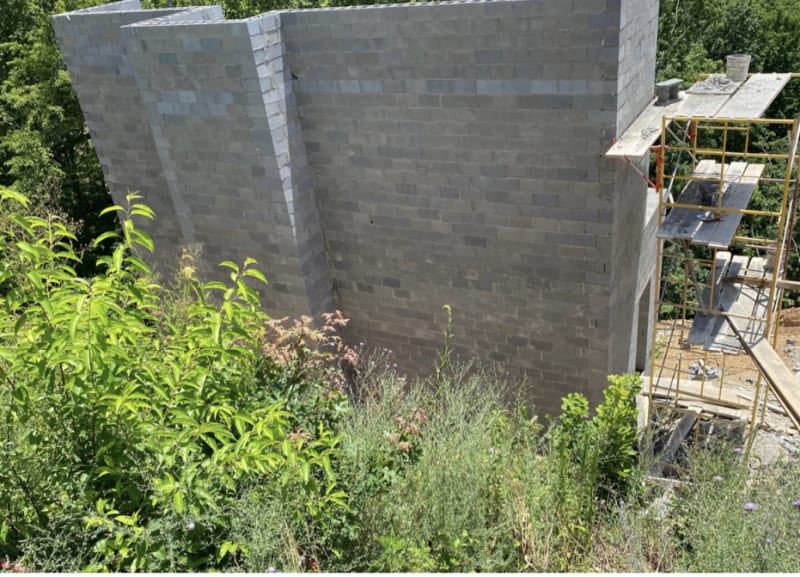Hello all. A friend of a friend contractor came to me. He has a masonry house on a steep slope under construction. Anyway, he had another engineer design his below grade walls and the guy has ironically disappeared. There is significant vertical cracking of mortar joints and block near the bottom of the wall. It retains approximately 25 (yes 25!) feet of soil. 12” block filled solid with number 5 bars 16” oc horizontally and vertically.
I already told him I would not in a million years take ownership of the design and stamp it, but I’d gladly help him out for free.
Any ideas? Building a shear wall is out of the question because the basement will be finished space. Are those carbon fiber tension straps any good? I have no experience with designing them. The wall is on the order of 25’ long where it os braced by other walls turning 90 degrees. He has all gravel (no soil) backfill and plans to pour a driveway (so more loading from cars).
I don’t want to tell him to kick rocks but this doesn’t look good to me. I’ll upload a picture in another post looking from the road.
I already told him I would not in a million years take ownership of the design and stamp it, but I’d gladly help him out for free.
Any ideas? Building a shear wall is out of the question because the basement will be finished space. Are those carbon fiber tension straps any good? I have no experience with designing them. The wall is on the order of 25’ long where it os braced by other walls turning 90 degrees. He has all gravel (no soil) backfill and plans to pour a driveway (so more loading from cars).
I don’t want to tell him to kick rocks but this doesn’t look good to me. I’ll upload a picture in another post looking from the road.

